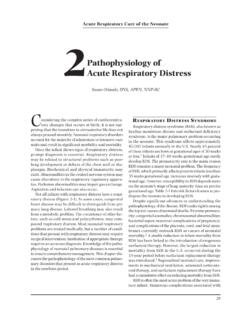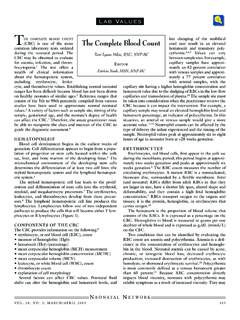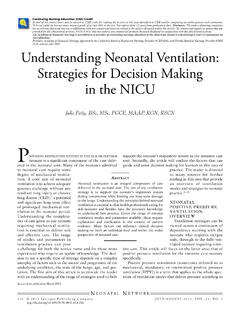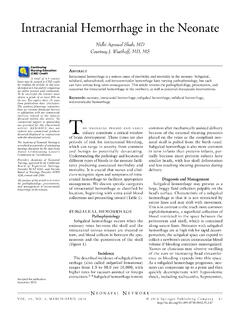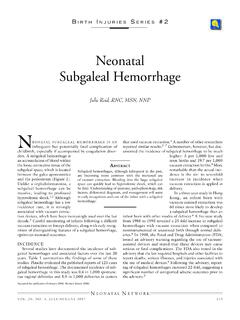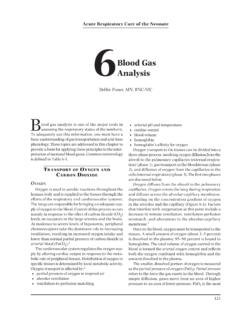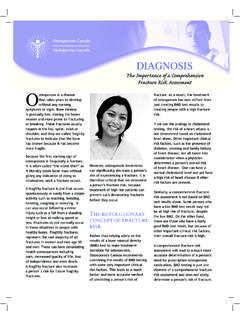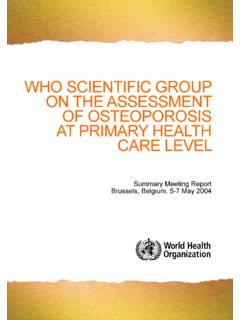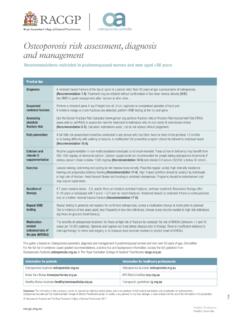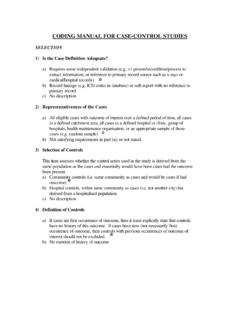Transcription of Caput Succedaneum and Cephalohematoma: The Cs that …
1 Birth Injuries Series #3. Caput Succedaneum and Cephalohematoma: The Cs that Leave Bumps on the Head Lisa Nicholson, RNC, MSN, NNP. B irth injuries to the head occur because the head is particularly vulnerable to trauma during the forces of labor exerted during vertex deliv- eries. Caput Succedaneum and (where amniotic fluid is not available to cushion the skull during labor), in primagravidas, and in instrument-assisted deliveries. During vacuum- assisted delivery, the point at cephalohematoma are the most Abstract which the cup is attached to the common types of birth injuries Caput Succedaneum and cephalohematoma are conditions head yields a vacuum Caput .
2 As to the head. Caput Succedaneum that rarely evoke much concern in the NICU but deserve vacuum pressure is applied and is a collection of edematous fluid more attention. This article examines the two conditions, pulling force is exerted on the above the periosteum between reviews the literature, discusses possible complications, head, swelling occurs second- and leaves the reader with a heightened awareness of these the outermost layer of the scalp ary to the trauma. This type of seemingly benign lesions. and the subcutaneous tissue. It Caput is called a chignon, or arti- is a common lesion seen at birth.
3 Ficial Caput Cephalohematoma is a subperi- Several cases of Caput suc- osteal accumulation of blood that occurs infrequently, with cedaneum diagnosed in the third trimester by ultrasound an incidence of percent of all live have been described in the literature. In most of the prenatal descriptions, fetal position, oligohydramnios, and possibly Caput Succedaneum Braxton Hicks contractions have been identified as causative Caput Succedaneum is most commonly seen on the pre- 5. senting portion of the infant's skull during a vaginal birth. The swelling is formed from the high pressure exerted on the Clinical Manifestations infant's head during labor by the vaginal walls and uterus as The Caput Succedaneum is evident immediately following the head passes through the narrowed This prolonged delivery and gradually decreases in size thereafter.
4 It is most tension causes serosanguineous fluid to leak from the subcu- commonly seen on the vertex of the The Caput is gener- taneous tissue into the area above the periosteum between ally 1 2 cm in depth and varies in On physical the scalp and the lining of the periosteum with resultant examination, it has a soft, boggy feel with irregular margins, edema and/or bruising. This location results in a collection and it may have petechiae, purpura, and/or an ecchymotic of fluid that crosses over the cranial sutures (Figure 1). appearance. The collection of serous fluid shifts from side to Although Caput Succedaneum may occur in the absence side as the infant's head position is changed.
5 In rare cases of of risk factors, incidence increases in difficult or prolonged vacuum-assisted delivery, the skin breaks when the vacuum cup labors, with premature rupture of the amniotic membranes pops off of the head and abrades the underlying Accepted for publication March 2006. Revised June 2006. N E O N ATA L N E T WO R K. VOL. 26, NO. 5, september/october 2007 277. Figure 1 n Diagram of the infant scalp showing the locations of by fetal head position in utero, head compression by the the common hematomata of the scalp in relation to the uterine walls in the case of oligohydramnios, or premature layers of the scalp.
6 Rupture of the Caput Cephalhematoma succadaneum Subgaleal hematoma Clinical Manifestations Because of the slow nature of subperiostial bleeding, ceph- Epidural Skin hematoma alohematomas are not usually present at birth but develop hours or even days after As the bleeding continues Epicranial Periosteum aponeurosis and blood occupies the subperiosteal space, pressure in this area builds and acts as a tamponade to stop further bleeding. Dura Skull A fi rm, enlarged unilateral or bilateral bump covering one or Brain more bones of the scalp characterizes the lesion. The mass From: Sheikh, A. M. H. Public domain with credit.
7 Cannot be The overlying skin is usually not discolored. Cranial sutures clearly defi ne the boundaries of the cephalohematoma, although a Caput Succedaneum or scalp swelling overlying the cephalohematoma can obscure Possible Complications those boundaries. The parietal bones are the most common Halo scalp ring, a type of alopecia, may occur in infants site of injury, but a cephalohematoma can occur over any of with a Caput Succedaneum . The hair loss develops as a result the skull bones. The right parietal bone is involved twice as of tissue necrosis from prolonged pressure against the ring often as the left, with unilateral five times as likely as bilateral of the cervical os during the birthing process.
8 In most cases, parietal bone ,12 The literature is not clear as to hair grows back over time, but scarring and hair loss are why the right side is more frequently involved than the left, sometimes permanent. Tanzi and colleagues believe that this but it may be because the right side is positioned to absorb condition is common, but that it is underrecognized and more of the impact. The infant may be sensitive to palpation therefore underreported in the pediatric of the cephalohematoma, especially in the case of an underly- ing skull cephAlohemATomA. Cephalohematoma, sometimes called cephalhematoma, Possible Complications is a collection of serosanguineous or bloody fluid below the Skull fracture .
9 Linear skull fractures occur in about periosteum of the skull. Cephalohematoma occurs twice 5 percent of unilateral8,10 and about 18 percent of bilat- as often in males as in females, for unknown reasons. It is eral In 1952, Kendall and woloshin more common in primagravidas, in large infants, following reported that underlying fractures occurred in 25 percent of instrument-assisted deliveries (with vacuum or forceps), fol- infants with No relationship has been lowing prolonged difficult labor, when cephalopelvic dispro- made between the size of the cephalohematoma and pres- portion exists, when the head is in a deviant position (occipital ence or absence of a fracture .)
10 Routine x-rays are not recom- posterior, occipital transverse), or when a scalp electrode has mended, but should be obtained when the cephalohematoma been ,8 These risk factors contribute to the traumatic is excessively large, when central nervous system symptoms impact of the birthing process on the head and are well docu- are present, or when an extremely difficult delivery has mented in the literature. taken Linear skull fractures usually do not require Cephalohematoma is an injury that results from trauma to the skull as it is forcefully and repeatedly compressed Calcification. On rare occasions, a cephalohematoma against the pelvic bones with contractions during labor.
